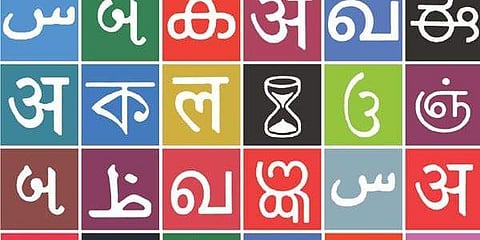

Four years ago, while looking at search analytics of our travel blog, we found that people were searching Hindi terms and that too in Devanagari, but they were obviously landing on an English page. This led us to launch our Hindi Travel blog that soon garnered a compact but loyal readership without much marketing. The marketing spends on the Hindi media and I assume other Indian languages stay negligible.
Things are changing fast though. Instagram recently announced that Instagram Lite would be available in several Indian languages. Google just announced that it would show relevant content in compatible Indian languages that include major Indian ones. I can already see my Google Adsense account in Hindi; Google Maps should soon follow.
The Facebook app already picks up a default local language for me based on my base location. The Jio browser for Android phones supports eight Indian languages. One of the big reasons for the success of video content is that it breaks the language barriers. It can be created without worrying about the grammar rules in the language or a dialect that you are most comfortable in.
As content is being translated and published in different languages around the country and the world, it opens up translation as a career opportunity for a large number of people. Perfect for those who want to live a flexible life with a laptop as office. This in turn is an opportunity for trainers who train people in different languages, either in online or offline classrooms or through mobile apps. I am reminded of my visit to Mattur—one of the rare Sanskrit-speaking villages in Karnataka.
While I was amazed to hear the fluent conversational Sanskrit, I was equally delighted to see them using basic technology to teach Sanskrit around the world. Translation may seem like a freelancer’s domain but there are big projects like the Murty Classical Library of India that is translating ancient Indian classics into English to make them available to the world. Given the number of manuscripts across the country and the world classics that we need to read in India, there is an opportunity for many more such projects. Mumbai-based Indus, through its App Bazaar, is creating India’s own version of Playstore to host mobile applications by leveraging the language advantage.
It offers over four lakh apps in 12 Indian languages. Currently it is the default app store on about hundred million Samsung devices in India. It offers localisation support to any developer who wants to create an Indian language mobile app or port any existing app in Indian languages along with helping them with distribution—a great move that would help local language users as well as open up opportunities for those who want to build local and hyperlocal apps in these languages.
Indus’s technical support though still remains global, be it device partners Samsung or cloud partners Amazon web services. The company is yet to be profitable but its pioneering investment in languages will hopefully soon take it there. Those working on natural language processing (NLP) have been trying to bridge the gap between human and machine learning. If you have ever wondered how your mobile phone creates your version of a dictionary on your device or how it converts text to speech taking care of the nuances of your pronunciation, or how Gmail suggests possible replies for your emails, its NLP at work. Machine translation is part of its portfolio.
It is an area that has seen limited yet extremely usable success. You cannot yet trust the machine translations to have literary quality, but for all practical purposes they work. Google just launched its made in India, free and open-source machine learning tool for Indian languages called Multilingual Representations for Indian Languages or MuRIL for researchers, students, and start-ups who want to create local language technologies.
IBM’s Watson Discovery—an artificial intelligence-based discovery tool—now supports Hindi, which is one of the 10 languages that they support worldwide. Simply put, this means that all the content available in these supported languages can now be searched for and translated to the language searched in. The impact of this is multi-dimensional. English would cease to be a necessary condition for both employers as well as employees, sharpening the focus on the core competencies and widening the net at both ends. Not to miss the opportunities in building more such technology tools.
A Gujarati reader once reported that he translates my posts using Google translate and gets confused, urging me to write in Gujarati. It told me about the need or market for local languages, the adaptation of latest technologies in remote areas, and the knowledge and hence opportunities gap that a better solution can plug for the user.
For the longest time we have seen digital nomads travelling the world teaching spoken English in non-English speaking regions. Would we see people travelling around to teach yoga or music speaking their own languages and using technology to communicate?
Anuradha Goyal (Tweets @anuradhagoyal)
Author and founder of IndiTales (https://www.inditales.com/)